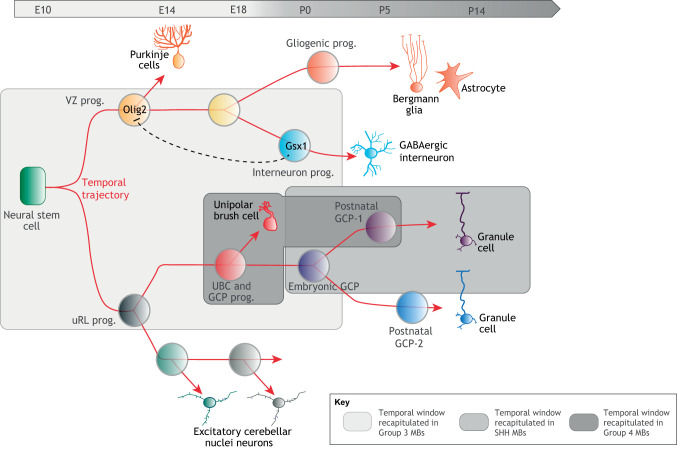Fig. 5.
Transcriptional trajectory during development and tumorigenesis in the cerebellum. Single-cell RNA-seq of the developing murine cerebellum reveals the transcriptional trajectory along the different branches of the cerebellar lineage. As the developmental program unfolds, progenitors progress throughout various competence states and produce diverse types of progeny. Olig2 and Gsx1 have been proposed to regulate temporal identities in VZ progenitors, suggesting that multiple temporal patterning systems may concurrently progress in the various branches of the lineage to regulate progenitor competence and proliferative properties. Specific subparts of the transcriptional trajectory are recapitulated in Group 3, Group 4 and SHH MBs. An attractive hypothesis is that distinct temporal patterning systems possibly coopted from different cells of origin may govern many aspects of tumor properties in the different MB subgroups. GCP, granule cell precursor; MB, medulloblastoma; prog., progenitor; UBC, unipolar brush cell; uRL, upper rhombic lip; VZ, ventricular zone.

